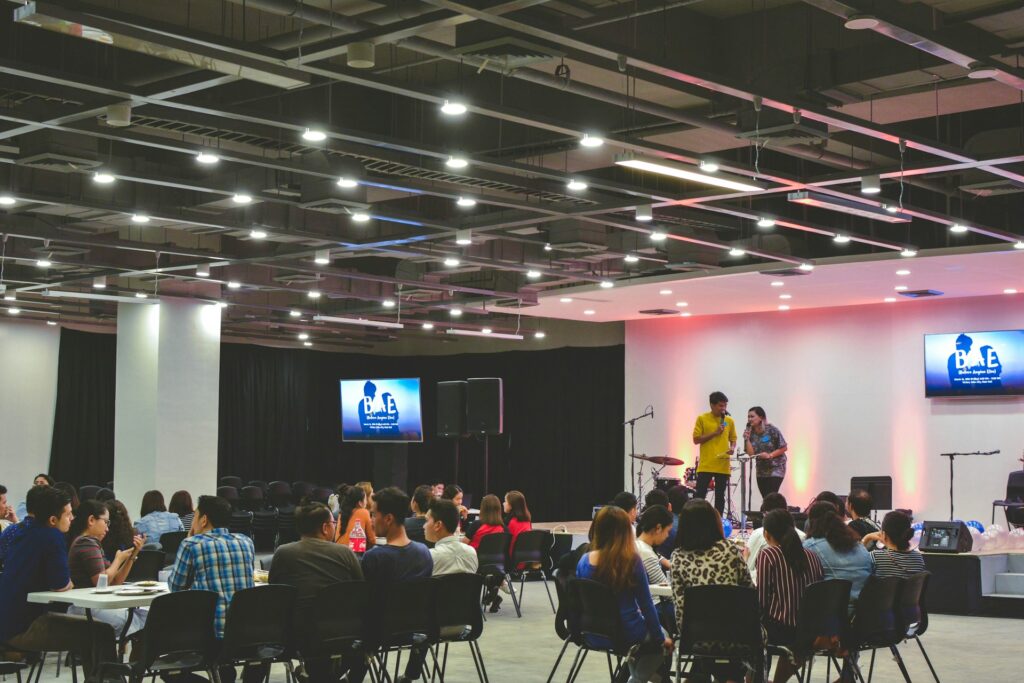In today’s competitive landscape, businesses are constantly searching for innovative ways to foster loyalty among their customers.
One of the most effective strategies involves creating experiences that not only engage consumers but also build long-lasting relationships.
Interactive events stand out as a powerful tool in this regard, offering a platform where brands can connect with their audience on a deeper level.
These experiences go beyond traditional marketing techniques, turning passive observers into active participants. The outcome? Enhanced customer loyalty is fueled by memorable encounters.
Key Takeaways
- Ensure your interactive events have specific, measurable, achievable, relevant, and time-bound objectives that align with your broader marketing and business strategies.
- Understanding your audience and their requirements is crucial to designing interactive events that resonate with them and foster customer loyalty.
- Incorporate advanced technologies like VR, AR, and data analytics to enhance engagement and create personalized event experiences for attendees.
- Collecting feedback and tracking key metrics is critical to improving future events and gauging the event’s effectiveness in promoting customer loyalty.
- Using interactive events not just as promotional activities but as platforms for relationship building allows businesses to foster long-term customer loyalty.
Define Clear Objectives For Your Event
Defining clear objectives is a critical step in the planning process of any interactive event. Not only do these objectives guide your overall strategy and execution, but they also provide a framework for measuring the event’s success.
Without clear objectives, it’s challenging to determine whether an event fulfilled its intended purpose or to quantify its impact on your audience and your business.
When setting objectives for your interactive event, start by asking yourself what ultimate outcome you want to achieve.
This could range from increasing brand awareness and customer engagement to generating leads, driving sales, launching a new product, or enhancing customer loyalty.
It’s imperative that these goals align with your broader marketing and business strategies to ensure that the event contributes to your company’s overarching aims.
To ensure your objectives are SMART (Specific, Measurable, Achievable, Relevant, Time-bound), consider the following:
Specific
Narrow down your objectives to be as specific as possible. Rather than aiming to simply “increase engagement,” specify what type of engagement you’re looking for and with whom. For example, “increase social media engagement among 18-25 year-olds by 20%.”
Measurable
Your objectives should have concrete criteria for measuring progress and success. If your goal is to generate leads, define how many leads you consider successful.
Having measurable goals allows you to track progress during and after the event, making it easier to evaluate its effectiveness.
For instance, using tools like www.regfox.com can help you monitor registrations and attendee engagement. By analyzing this data, you can refine your strategies and improve future events.
Achievable
While it’s important to set ambitious goals, they should also be realistic and attainable within the scope of your resources, budget, and timeframe. This consideration ensures that your team remains motivated and focused, working towards goals that are within reach.
Relevant
Ensure that each objective ties back into your broader business goals. If your company is focused on entering a new market segment, an objective related to engaging potential customers within that segment is highly relevant. Each objective should contribute meaningfully to your brand’s growth and strategic direction.
Time-bound
Every objective should have a deadline or time frame attached. Whether it’s achieving a certain number of product demos at the event or boosting website traffic in the weeks following the event, having a timeline creates urgency and focus, guiding your planning and promotional efforts.
Crafting Experiences That Matter
For interactive events to successfully foster customer loyalty, they must be carefully planned and executed. This begins with understanding your audience—knowing their preferences, pain points, and what excites them.
With this insight, brands can design events that are engaging and highly relevant to their audience.
For example, the event production of Aram is so successful because they makes sure their events contain the personal touch of their customers while also meeting budget and deadlines.
Whether it’s a hands-on workshop, an immersive product demonstration, or an entertaining competition, the key is to offer something that adds value to their lives.
It’s about creating moments that customers would want to share with others, amplifying the impact of the event through word-of-mouth.
Moreover, successful interactive events always leave room for personal connections. In today’s digital age, genuine human interaction is becoming increasingly rare.
It’s these personal touches that often turn attendees into loyal fans, as they feel a closer affiliation with the brand and its values.
Leveraging Technology for Enhanced Interaction
Incorporating technology into interactive events can greatly enhance the engagement and personalized experience for participants.
From virtual reality (VR) setups that transport attendees to different worlds to augmented reality (AR) apps that bring products to life in intriguing ways, technology provides endless possibilities to captivate an audience.
Moreover, interactive elements like live polls or social media contests encourage participation and foster a sense of community among attendees.
However, the use of technology should not overshadow the essence of the event. It’s crucial that tech features are incorporated seamlessly and serve to enhance, rather than complicate, the attendee experience.
Personalization plays a significant role here; using data analytics to tailor experiences according to individual preferences can make participants feel truly valued.
Whether it’s through customized product recommendations at a launch event or personalized feedback sessions in workshops, technology can be instrumental in forging deeper connections between brands and their customers.
Measuring Success and Gathering Feedback
The end of an interactive event does not signify the conclusion of engagement efforts; it opens a doorway to gather invaluable insights.
Collecting feedback through surveys, social media monitoring, or direct conversations helps understand what worked well and what didn’t.
This information is gold dust for improving future events and optimizing customer engagement strategies over time.
Whether positive or negative, every piece of feedback contributes to making subsequent events more aligned with customer expectations.
Furthermore, tracking key metrics such as attendance rates, social media engagement levels, and post-event sales or inquiries can provide a quantifiable measure of success.
However, beyond metrics, the real success of interactive events is often seen in the long term – in sustained customer loyalty and the ripple effect of word-of-mouth promotion by enthusiastic participants.
Conclusion
Interactive events present an exciting opportunity for businesses to differentiate themselves and forge lasting customer relationships.
In essence, when done right, interactive events are not just events; they’re milestones in a continual journey of relationship-building between brands and their customers.











0 Comments